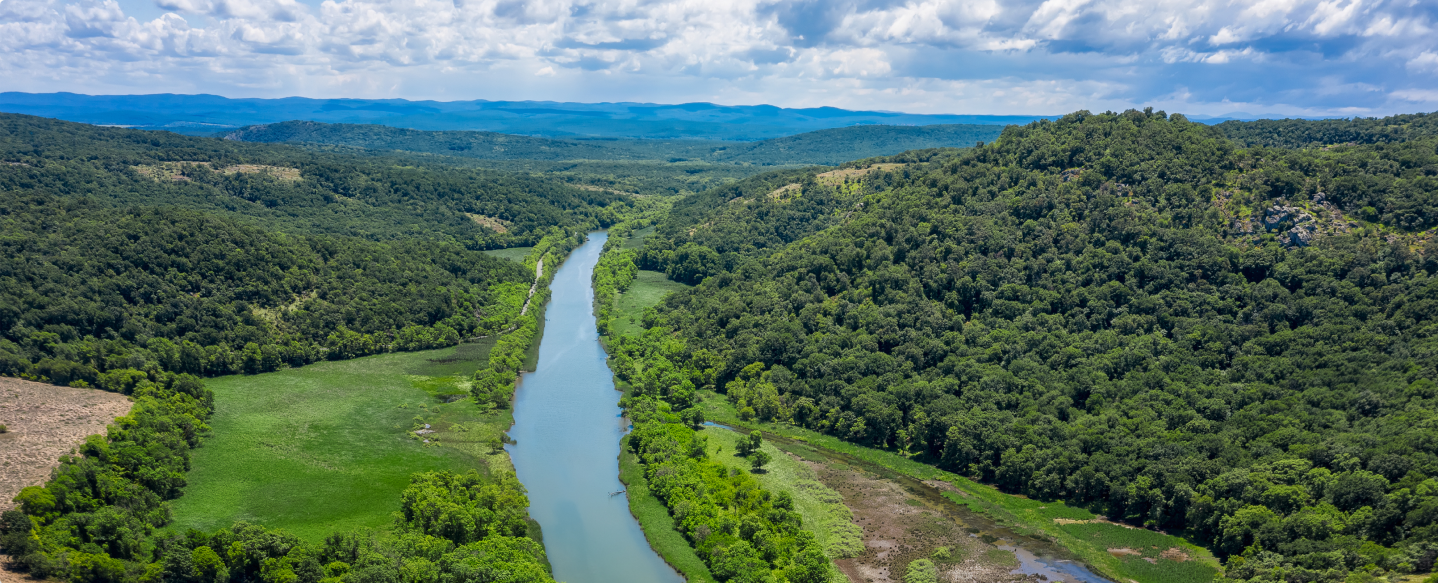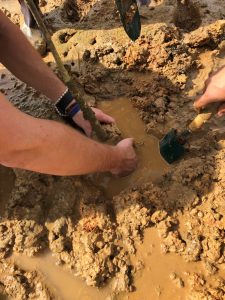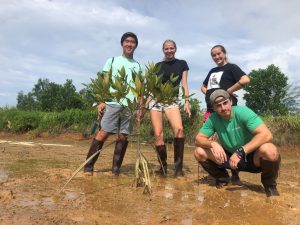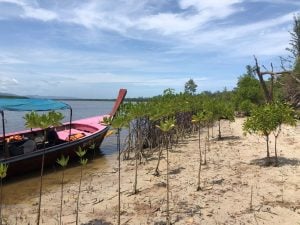Discover how Namib Desert wildlife thrives in extreme conditions – elephants, beetles, plants & more adapt uniquely to survive harsh environments.
GVI
Posted: July 9, 2024

Posted: September 22, 2019
GVI’s Impact and Ethics reports discusses the importance of mangroves and the excellent efforts we are making worldwide. Here is one volunteer from Duke Engage’s account of her leadership project focused on these beautiful ecosystems. To read more about the impact and ethics report see: https://www.gvi.co.uk/the-impact-ethics-report
Mangroves are an underrated ecosystem when it comes to the variety of services that they provide for the environment. Mangroves act as nurseries for many juvenile ocean fish, they mitigate strong tides coming onto the shoreline, and they also filter out pollutants that may runoff from the land and into the ocean. They have been severely reduced in size in Thailand in exchange for urban development and agricultural, particularly in erecting shrimp farms. As my leadership project, I worked on a restoration project that would help build up some of the lost mangrove ecosystem to provide some additional benefits to the environment surrounding it.
Planning
First, my group had to figure out where the location for our newly planted mangroves would be. A lot of the land is privately owned, so it would take persuasion and discussion between a Thai community member and GVI to allow us to come and perform our project. GVI has fantastic relationships with a variety of different partners and communities, one of which being the Thai Muang National Park. GVI has been visiting the park and performing coral reef surveys for a couple of years, and the community surrounding it has been eager to be more sustainable: thus, they were excited to collaborate with this project too. They provided us with nearly 200 mangrove trees to plant in the area and so a plan was formed!
Practising

Mangrove seedlings have to be planted in a certain manner in order to withstand the changing tides while having enough room to grow its large and looming roots. We spent hours combing through the web to read about prior examples of mangrove restoration projects and their success, and we were lucky to have staff members that could provide advice on their past restoration projects on mangroves and what they found successful for them. However, the best form of preparation was being able to practice our mangrove planting skills at a former shrimp farm that GVI had done a previous restoration project at. The plot was filled to the brim with mangrove seedlings, and they were having a tremendous amount of success with its growth. Some of the trees, however, had fallen over since they were planted too shallow into the ground, so we were given the chance to replant some of them! This was valuable experience to be able to provide our cohort with the necessary information to explain how to place a seedling into the ground and be able to prep it for a successful growth. Our leadership development workshops emphasized the importance of being a prepared leader when performing a project in a group, and the practice I received at the old shrimp farm absolutely fulfilled this! Plus, it was such a fun experience getting dirty in the clay while being so happy to give some of these fallen seedlings a second chance at growth!
Performing
Eventually, restoration day came. My team and I were ready to get out on the field and plant our seedlings! We stacked our wellies into the vans and went to the Thai Muang National Park. We finished all of our seedlings in only an hour, and the 200 mangroves were lined up beautifully against the waterline! The community leader who helped arrange this project with us expressed how grateful he had for the work we had done that day, and he had also said he would be happy to continue building a relationship with GVI for future restoration efforts to occur.


Reflecting
The leadership development portion of our program with GVI was awesome in helping me push myself to produce a reasonable and exciting project that not only I was proud, but also excited my fellow volunteers to participate in. Further than that, we were able to build a “how-to” guide for future volunteers and staff members to utilize to quickly gain information on performing future restoration projects in the Phang Nga area to be able to increase the amount of work that GVI can engage in. I have come to love mangroves for what they provide for the environment, and greater than that, I found that I really love conservation work and being able to engage in service that not only helps the environment, but also the community. Thank you GVI for the skills you’ve provided me in being a good leader, and giving me and my team an opportunity to test them out!
Discover how Namib Desert wildlife thrives in extreme conditions – elephants, beetles, plants & more adapt uniquely to survive harsh environments.
GVI
Posted: July 9, 2024